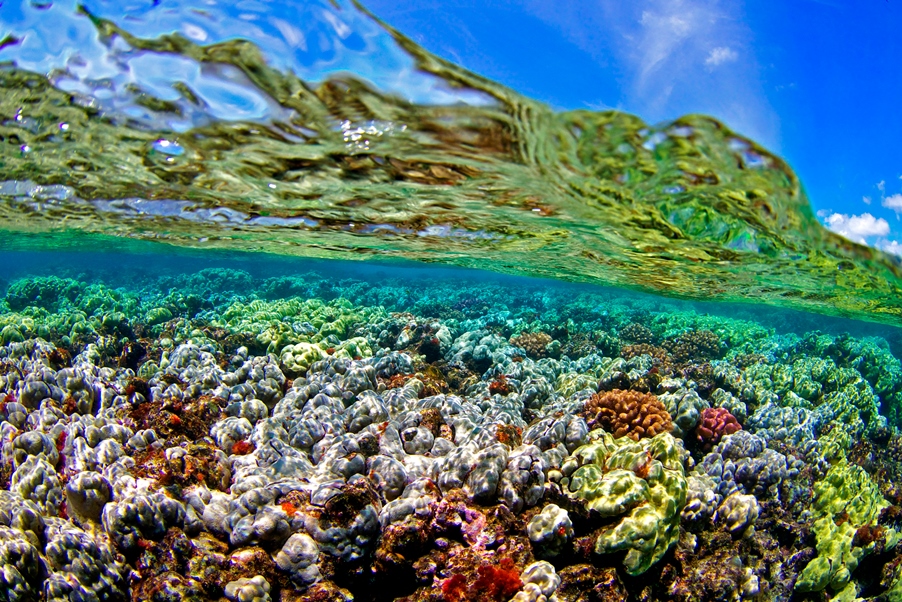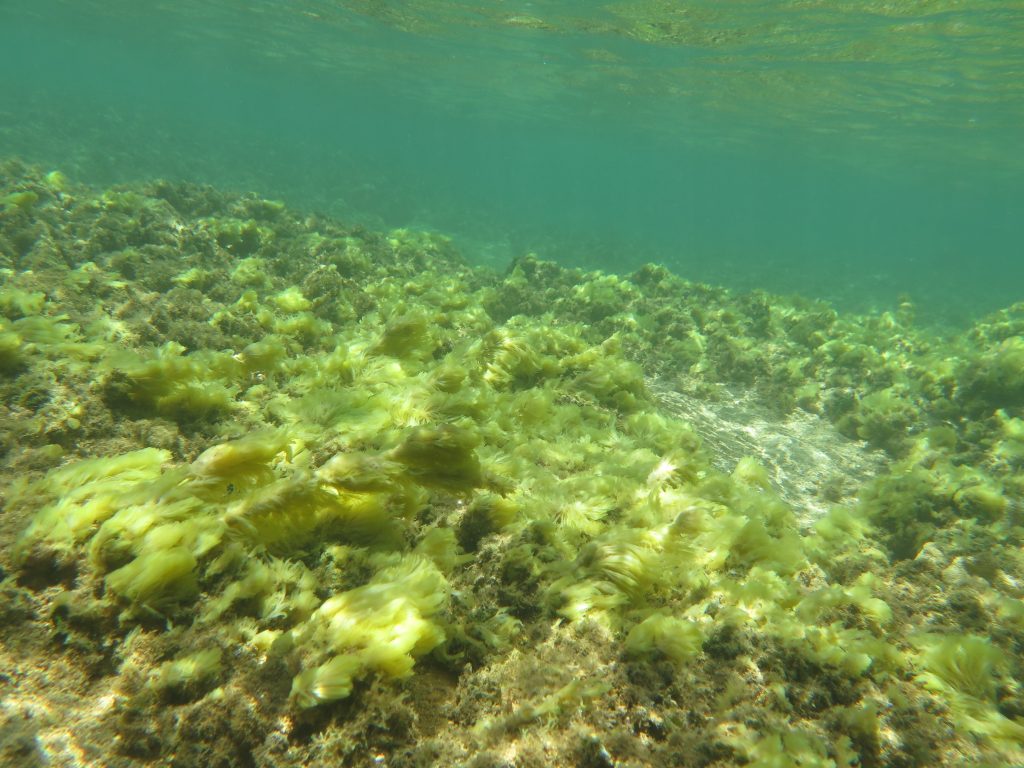Algae in Coral Reefs

Algae in Coral Reefs
Cultural Connection

Limu (algae) play a significant role in Hawaiian culture and heritage, as it is a huge part of a traditional Hawaiian diet, and is used for many medicinal, religious, and cultural purposes. While fishing and hunting were generally reserved for men traditionally, women were the limu pickers and experts. Women gathered and prepared limu for the entire community, and because of kapu (meaning forbidden or prohibited) systems that restricted them from eating certain foods, women became the limu experts. Once healthy and abundant, native limu have now suffered due to urban development, unsustainable harvesting, the introduction of non-native species, climate change, and other pressures. The loss of ancestral knowledge and traditional limu practices also contribute to the decline of native limu.

Dr. Isabella Aiona Abbott, the first Native Hawaiian woman to earn a PhD in science, is highly respected and was recognized as the world’s leading expert on Hawaiian limu. Dr. Abbott strongly supported the perpetuation of traditional knowledge, and said, “…Considerable knowledge of limu can still be found among Hawaiian elders, so this, too, qualifies as an area of cultural continuity. Unfortunately, degradation of the reefs and the case of purchasing limu instead of gathering it threatens the transmission of this living body of knowledge to subsequent generations. I hope that every Hawaiian who has a parent or a grandparent to instruct them in this skill will make it a high, personal priority to learn it.” Some Native Hawaiian algae are highlighted below.
Native Hawaiian Algae

Limu kala
(Sargassum echinocarpum)
Endemic to Hawai‘i, limu kala is one of the most important algae used in cultural practices. It is used in ho‘oponopono, or forgiveness, ceremonies, where participants would be given a piece of limu kala, pray, and then eat the limu at the end. It was also used for cleansing by a kahu (priest) to purify a person, object, or place by mixing it with turmeric and salt water. Limu kala is associated with ‘opelu as well, and were used for fishers at the beginning of ‘opelu season.

Limu kohu
(Asparagopsis taxiformis)
Limu kohu is one of the most prized and popular algae used for food such as poke in Hawai‘i. It has two distinct reproductive phases that used to be categorized as separate species because their appearances were so different. The less noticeable form, called the Falkenbergia phase, is a small threadlike plant that usually grows on the surface of other algae, while the more recognized form is fluffy, feathery, and can range from a grayish to pink or magenta in color. When harvesting the limu, it is important to leave behind the base of the plant so that it may regenerate.

Halimeda
Halimeda is a green algae that is made up of calcified green segments. They usually grow attached to rock or hard substrate, but some species such as Halimeda kanaloana can grow in sand and form large meadows at depths of up to 260 feet. When they die, their calcified remains play a huge role in contributing to sand and sediment composition in coral reefs. Ocean acidification is a huge threat to calcifying algae, including crustose coralline algae, because acidic conditions limit growth and can cause calcified organisms to dissolve.

Limu palahalaha
(Ulva fasciata)
Limu palahalaha is a common algae found in Hawaiian waters, often being the dominant species in intertidal and shallow subtidal zones. It is also called “sea lettuce,” and was used as ornamentation in traditional hula. There are two other species of sea lettuce in Hawai‘i- limu pakaiea (U. expansa) is linked with the shark ‘aumakua, and limu ‘ele‘ele (U. prolifera) is frequently used in stews after being salted and fermented.

Limu huluhuluwaena
(Grateloupia filicina)
Also known as limu pakeleawa‘a, this species is also commonly used in several Hawaiian dishes and is traditionally finely chopped to release its flavor. Limu huluhuluwaena was reportedly Queen Lili‘ūokalani’s favorite, which she had brought over from Lahaina, Maui and replanted along the Waikīkī shorelines according to old Hawaiian newspapers.

Limu wāwae‘iole
(Codium edule)
Forming large mats on reef flats, this limu feels like velvet and requires careful cleaning before eating to remove sand and other organisms found on the surface. Other species of Codium are also eaten, such as limu ‘a‘ala‘ula (C. reediae), which releases a red liquid when it is salted.
Macroalgae provide many important ecological functions within coral reefs
such as reef stabilization, nutrient cycling, primary productivity (photosynthesis which creates oxygen), production of sand and of course, it is a main food source for many marine animals.
While macroalgae do play a critical role in reef ecosystems,
too much of it can be bad.
Life in coral reefs is all about balance, and we need herbivores to help
maintain that balance to prevent algae from overgrowing.



Algal Blooms
Algal blooms, or rapid increases in abundance, can occur due to a variety of reasons. The most common causes of algae blooms here in Hawai‘i include excess nutrient inputs from sources such as wastewater leaks, submarine groundwater discharge, or runoff containing fertilizers from agriculture. These factors along with the lack of herbivores to control algal populations can worsen conditions.

Algae thrive under enhanced nutrient conditions, and can grow faster than corals, allowing them to overgrow and smother corals and other benthic marine organisms. Invasive algae aggressively outcompete corals and some native algae species because their ability break into small pieces and spread rapidly, quickly taking over the surfaces of a reef. Some of the most commonly found invasive algae species are seen below.

(Acanthophora spicifera)

(Kappaphycus /Euchema)

(Gracilaria salicornia)
Image credits- Cover photo: Bert Weeks, all algae species photos: Keoki Stender (except for Grateloupia: Ryan Okano), top algal bloom photo: Anita Tsang



